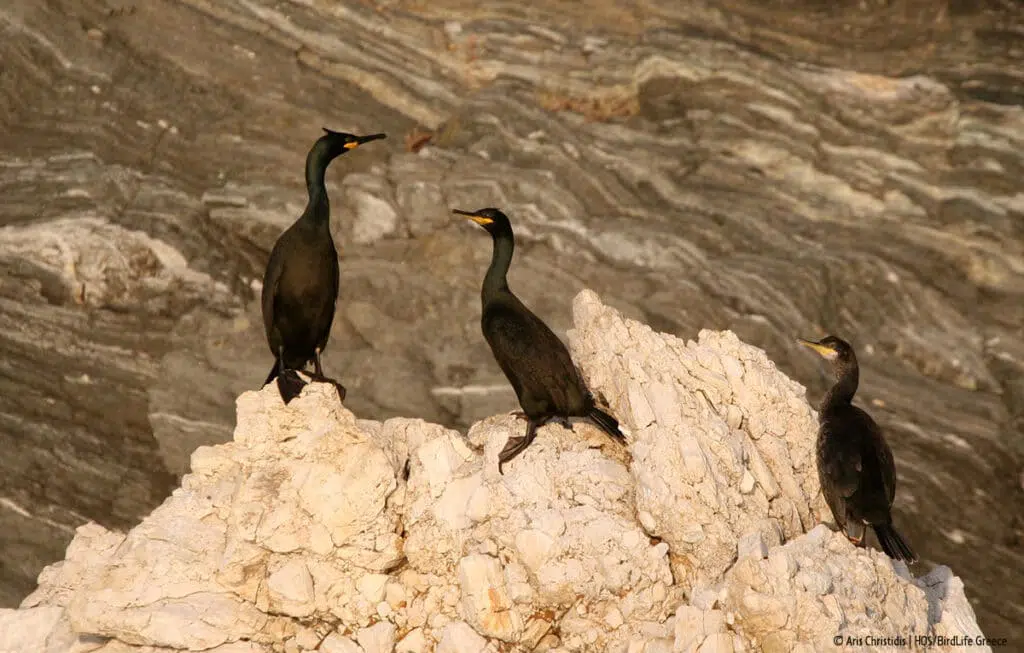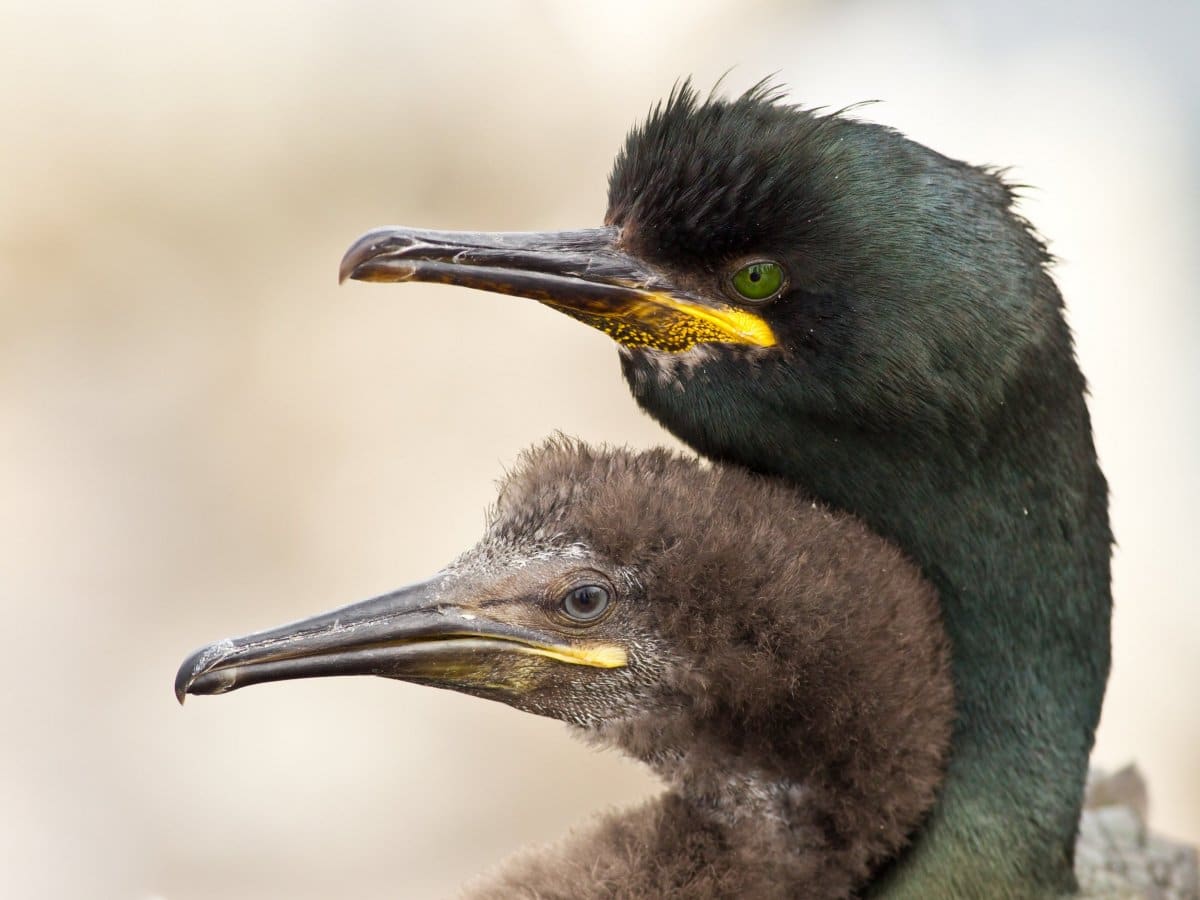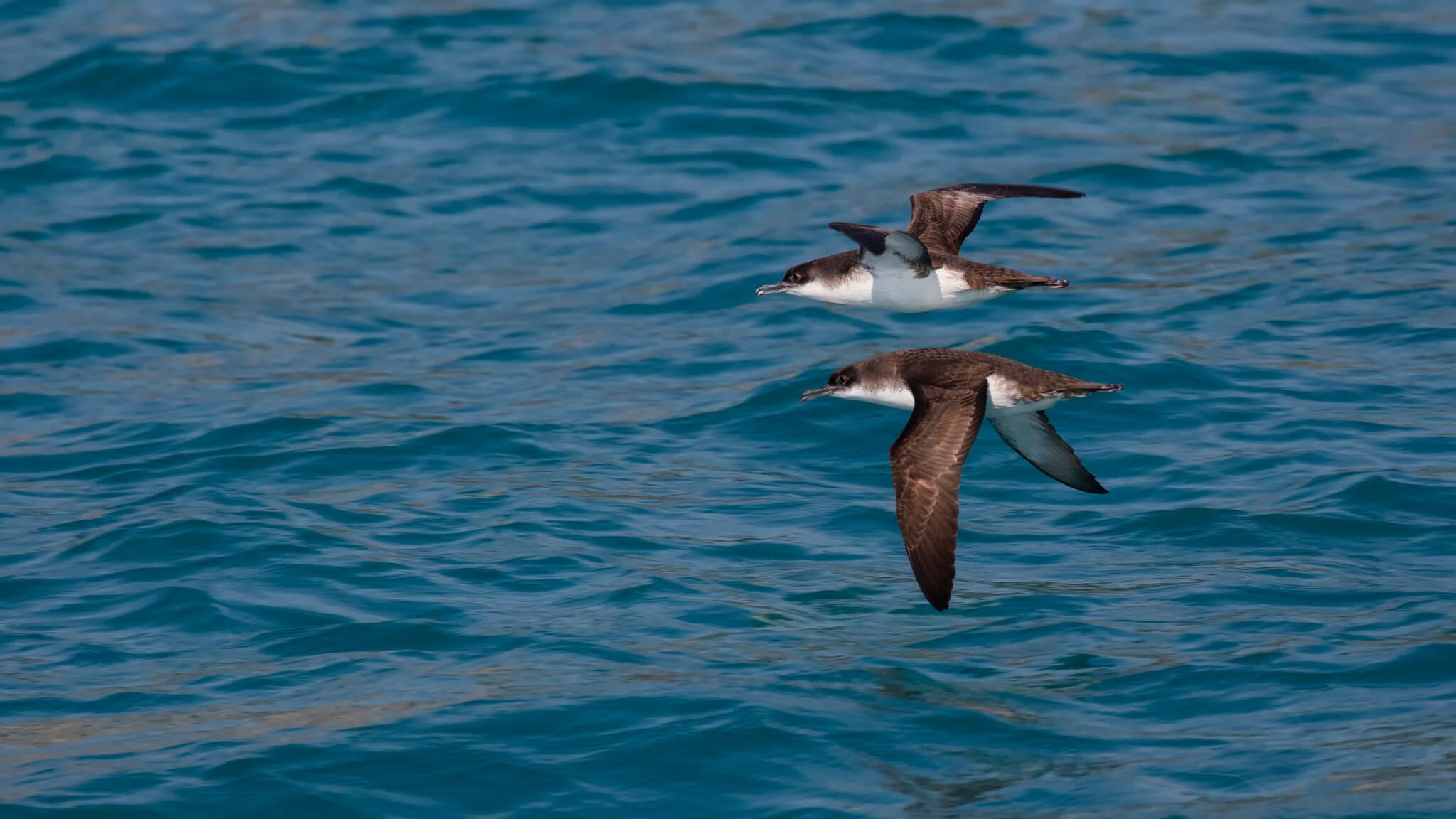Seabird of the month: European Shag (Mediterranean subspecies) Gulosus aristotelis desmarestii

This species lives and breeds in the entire Mediterranean, though it also breeds in the Black Sea. They are largely sedentary, meaning the birds tend to stay close to their breeding grounds during winter, although some birds can undergo short-distance migrations.
by Antonio Vulcano
Description
Population: There are 9,100 to 11,500 pairs in Europe (BirdLife International, 2021).
Wingspan: 95 to 110 cm
Lifespan: 12 years
Distinct features: You can recognize European shags by their dark feathers, pale-coloured cheeks, long-curved neck, and long, narrow bill. Adults have a small crest and green-tinged sheen on their feathers during breeding season. They can be found roosting on isolated rocks, swimming and diving along the coast, often alone.
Main prey: The European Shags’ diet consists primarily of coastal fish and marine benthic organisms (sea anemones, sponges, corals, sea stars, sea urchins, worms, bivalves, crabs…), usually associated with benthic habitats such as Posidonia seagrass beds. They forage in mid-water and along the bottom of sandy and rocky seabeds, preferring sheltered fishing grounds such as bays and channels. They usually forage away from nesting colonies, and they are exceptional divers.
Breeding
The European Shag (Mediterranean subspecies) is a coastal species that is loyal to its nesting site. Shags nest in rocky crevices, ledges and caves within sea cliffs. The nesting season is long, and egg-laying period varies year to year and depends on the region. The birds usually produce a clutch of 3 eggs which are incubated for 30 days prior to hatching. The chicks fledge approximately 50 days after hatching.
Population distribution
The species lives and breeds in the entire Mediterranean, though it also breeds in the Black Sea. They are largely sedentary, meaning the birds tend to stay close to their breeding grounds during winter, although some birds can undergo short-distance migrations. Some studies have uncovered a migration pattern between breeding sites in Croatia and non-breeding grounds in the Gulf of Trieste, Italy.
Main threats
- Coastal recreational activities and development
- Overfishing
- Bycatch
- Direct persecution (mainly at fish farms)
- Invasive species
- Coastal oil pollution
BirdLife and the European Shag (Mediterranean subspecies)
Our Greek Partner, the Hellenic Ornithological Society (HOS) has been working hard to protect this sub-species. They have coordinated the conservation of these seabirds created an inventory of marine Important Bird & Biodiversity Areas.
Interesting info
A study in Crete found that contrary to popular belief, European Shags feed mainly on small demersal species that are of low commercial value, posing no threat to fisheries.
They have impressive movements – and sometimes have trouble eating certain types of fish…
Image credits: Aris Christidis/ HOS BirdLifeGreece
You might also be interested in:






